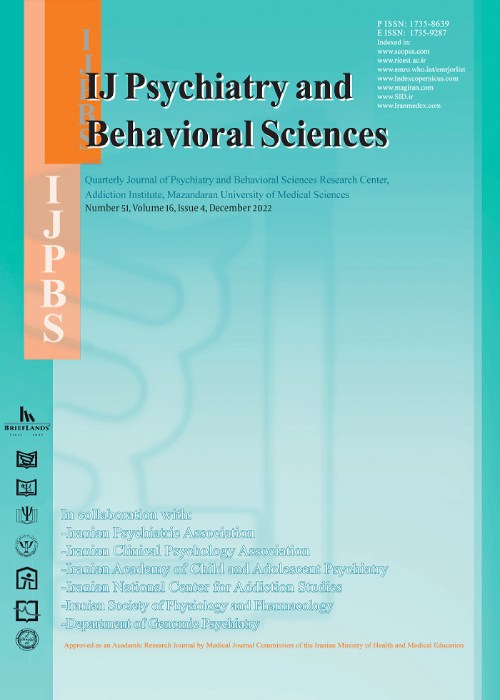The Frequency and Factors Related to Aggressive Behavior in Psychiatric Patients Controlled by a Variety of Restraint Methods
Aggressive behavior of patients in psychiatric wards is one of the main challenges faced by healthcare workers. Despite the abundance of research on the frequency of aggressive behavior, not enough attention has been paid to its severity. Furthermore, limited studies have evaluated the restraint methods used to manage aggressive behaviors.
The current descriptive study aimed to compare the relationship between demographic characteristics, diagnosis of psychiatric illness, medical illness, and hospitalization characteristics with features of aggressive behavior in patients experiencing different types of restraint during hospitalization.
We evaluated subjects admitted to the adult psychiatric wards of Imam Hossein and Taleghani hospitals in Tehran, Iran, in 2018. The patients were controlled by various restraint methods during hospitalization. All the patients were evaluated for the severity of aggression, which was determined utilizing the Persian version of the Modified Overt Aggression Scale (MOAS). All the data along with demographic and clinical characteristics obtained from medical records were analyzed using the Mann-Whitney and Kruskal-Wallis nonparametric test (P-value = 0.05) and Spearman correlation coefficient to describe the factors affecting the aggressive behavior of patients.
In this study, the prevalence of aggressive behavior was 11.7%. Among the demographic variables, gender (P-value = 0.003), education level (P-value = 0.05), and the history of aggressive behavior (P-value = 0.001) were significantly associated with the MOAS. Furthermore, as the hospitalization duration increased, the frequency of aggressive behavior decreased, and its severity intensified. Moreover, there was a significant relationship between aggression severity with admission type (P-value = 0.00), concurrent medical illness (P-value = 0.026), and substance abuse (P-value = 0.025).
Variables affecting aggressive behavior, such as male gender, involuntary admission, and a history of aggression, might aid in the early detection of patients who may exhibit more severe aggressive behavior.
- حق عضویت دریافتی صرف حمایت از نشریات عضو و نگهداری، تکمیل و توسعه مگیران میشود.
- پرداخت حق اشتراک و دانلود مقالات اجازه بازنشر آن در سایر رسانههای چاپی و دیجیتال را به کاربر نمیدهد.


